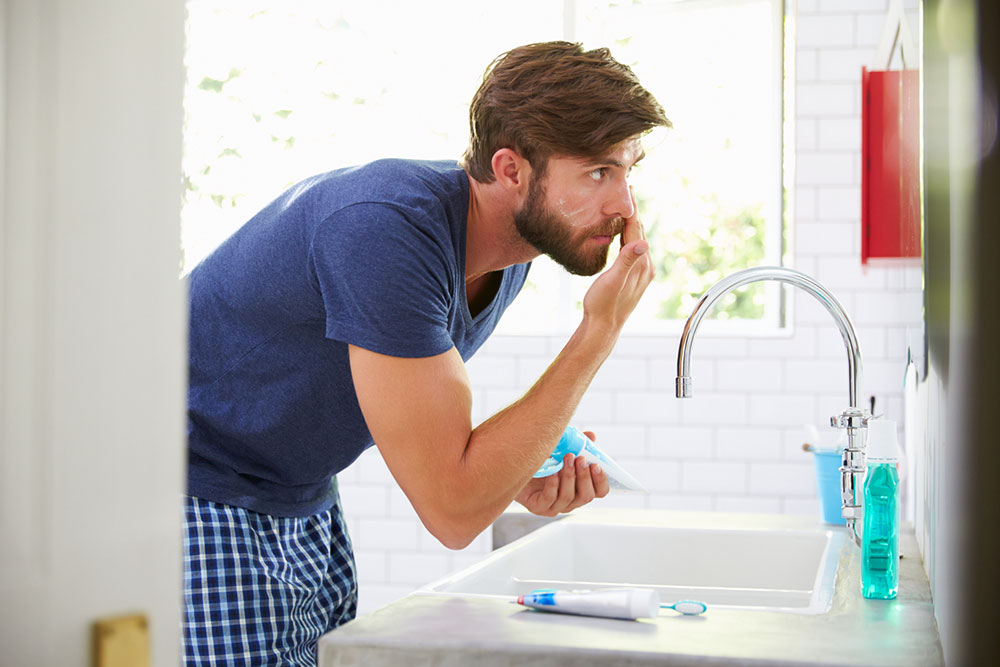20 beard grooming mistakes to avoid for a refined appearance

In recent years, beards have undergone a resurgence, emerging as a powerful style symbol. Growing a beard is a fun experience, but maintaining it requires careful attention and grooming. However, certain mistakes can sometimes hinder growth and affect the overall appearance of one’s facial hair. Therefore, beard grooming is essential not only for looks but also for healthy skin. Here are some common beard grooming mistakes to avoid for a more refined appearance.
Ignoring regular washing
Not cleansing the beard at least 2-3 times a week can lead to the accumulation of dirt, oil, and dead skin cells. This buildup causes unpleasant odors and fosters an environment that facilitates skin irritation and bacteria growth. It is advised to use a mild beard shampoo that can achieve cleanliness standards and be gentle on the skin.
Overwashing
It’s important to avoid using shampoo excessively on the beard, especially every day, since this can strip its natural oils and cause dryness and brittleness. Striking a balance and washing the beard a few times a week with a suitable beard shampoo preserves cleanliness and allows retention of natural oils.
Not conditioning
The significance of beard conditioning often goes underestimated. A quality beard conditioner plays a pivotal role in softening the hair, making it more manageable, and reducing the risk of breakage.
Using the wrong products
One of the most common mistakes men make while washing their beards is using a generic soap or regular shampoo. While these products can achieve the desired results, they can be harsh for facial hair and cause irritation or dryness in the long term. Specialized beard grooming products are designed to preserve moisture and promote a healthier beard. It’s also important to buy the right trimming products and maintain them regularly to avoid skin issues.
Overlooking the neckline
Neglecting the neckline when grooming a beard is another common error. A well-defined neckline contributes significantly to a neat and polished appearance. Taking the time to trim and shape the neckline prevents the beard from looking unkempt and unstructured and also avoids irritation and skin itching in that area.
Inconsistent trimming
Irregular trimming results in an uneven and untidy beard. Establishing a consistent trimming routine helps maintain the beard’s shape and appearance. This practice prevents the beard from looking unruly and guarantees a well-groomed aesthetic.
Overlooking brushing and combing
Brushing and combing can help distribute natural oils, prevent tangles, and stimulate hair follicles for improved growth. Not brushing or combing the beard can result in a messy and unkempt look.
Neglecting skin care
Healthy facial skin is the foundation for a flourishing beard. Neglecting proper skin care can lead to acne, ingrown hairs, and dry skin, which may impact the beard’s growth and overall appearance.
Impatience with growth
Growing a beard demands patience. Impatience often leads to premature trimming or styling, hindering the beard’s natural growth pattern. Allowing the beard to grow without interference during the initial period ensures a fuller and more natural look.
Ignoring food habits and hydration
Beard health is closely tied to an individual’s overall well-being. Well-balanced meals and proper hydration contribute to the beard’s vitality. To support optimal beard health, one should focus on drinking adequate water and consuming essential nutrients.
Using excessive heat
Using general heated styling tools like hairdryers each time after beard wash can cause damage, dryness, and breakage. Moderation and using heat-protectant products are crucial to protecting the beard hair while achieving the desired style.
Ignoring allergies
Some individuals may be allergic to certain grooming products. Persistent irritation or redness may indicate an allergic reaction. If so, it is important to seek a dermatologist’s advice or switch to safer alternatives to prevent discomfort and potential long-term skin issues.
Neglecting regular trims for long beards
Long beards are stylish, but they also require regular trims to prevent split ends and maintain a defined shape. Neglecting this aspect can lead to a messy and unkempt appearance.
Not drying properly
Vigorously rubbing the damp beard with a towel can lead to breakage, while using a high-heat hair dryer may cause damage, making it brittle. One should gently pat the beard dry with a towel and use a hairdryer in a low-heat setting to maintain the beard’s health.
Overusing styling products
While styling products can enhance the beard’s appearance, excessive use of chemical products can lead to a greasy and weighed-down look and may also affect the skin.
Using dull blades
Dull razor blades can cause irritation and uneven trims. Regularly changing razor blades ensures a smooth, clean shave and minimizes the risk of discomfort.
Trimming wet beard
It’s important not to trim the beard or mustache immediately after shampooing when it’s dripping wet. Wet hair tends to appear longer, and trimming it at this stage may result in cutting more than intended. It’s best to brush, comb, pat dry, and trim the beard when it’s damp for best results.
Ignoring genetics
Accepting and understanding the role of genetics in beard growth is essential. Genetic factors influence beard thickness and length, and individuals should embrace their unique beard characteristics.
Rushing the grooming process
Grooming demands time and patience. Rushing through the process increases the likelihood of mistakes and an unsatisfactory outcome. Taking the time to execute each step flawlessly contributes to a neatly groomed and visually appealing beard.
Ignoring cheek lines
Neglecting cheek lines affects beard definition and symmetry. Therefore, it is advised to carefully trim and shape these lines, which can help give the beard a more polished and refined appearance.
A well-maintained beard boosts confidence and complements one’s personal style. So, by taking up proper grooming practices, men can enhance the appearance of their facial hair and promote optimal growth.
















